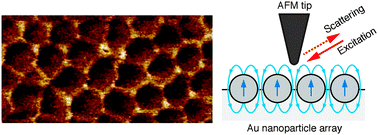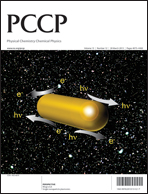Revealing local, enhanced optical field characteristics of Au nanoparticle arrays with 10 nm gap using scattering-type scanning near-field optical microscopy†
Abstract
Anomalous optical properties displayed by plasmonic structures are commonly attributed to the enhanced, local field within their corrugations. Though theoretical calculations of such field enhancements abound, experimental observations are relatively few, because only few optical microscopic techniques have enough spatial resolution. We used scattering-type scanning near-field optical microscopy to resolve local optical characteristics of a

- This article is part of the themed collection: Optical studies of single metal nanoparticles

 Please wait while we load your content...
Please wait while we load your content...